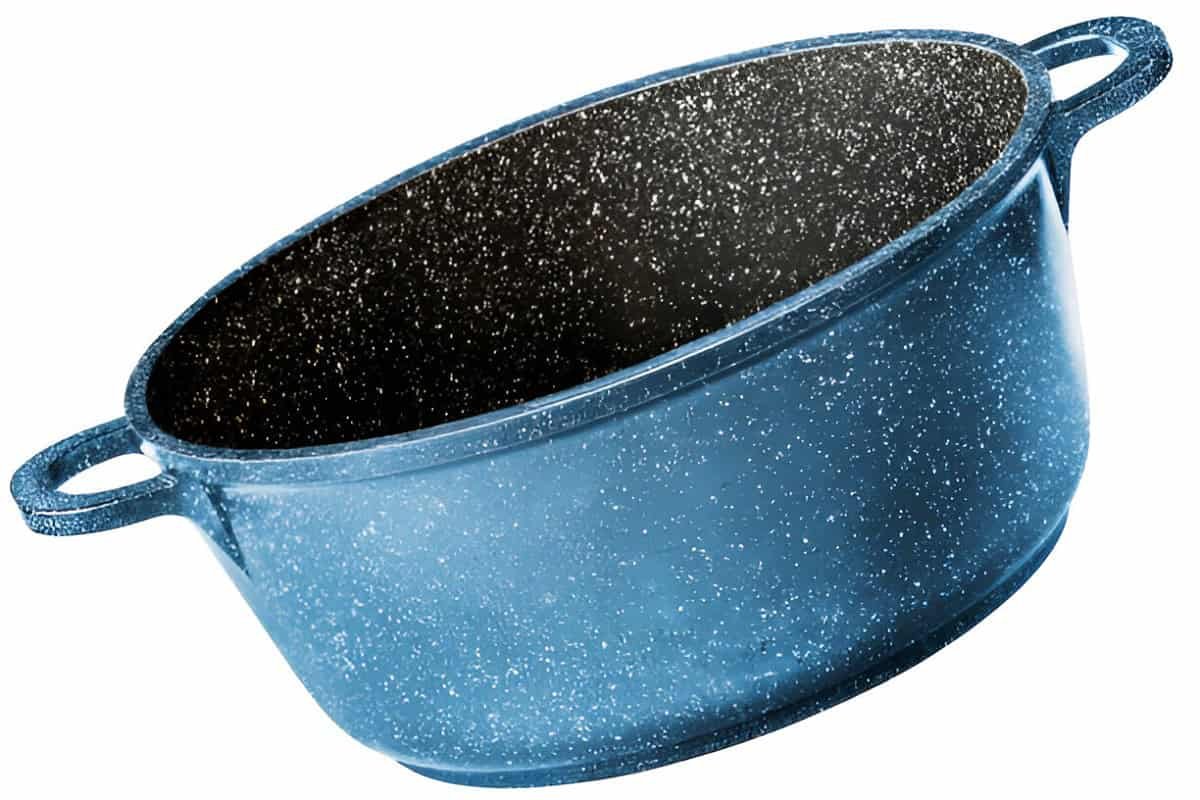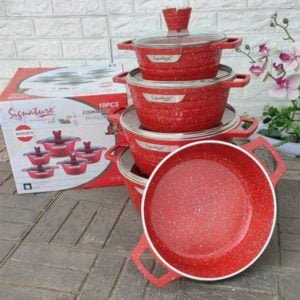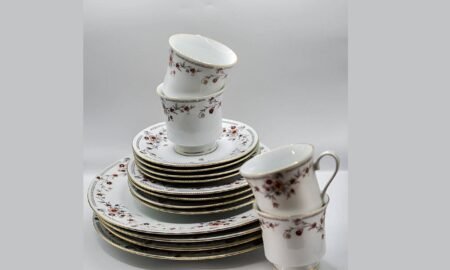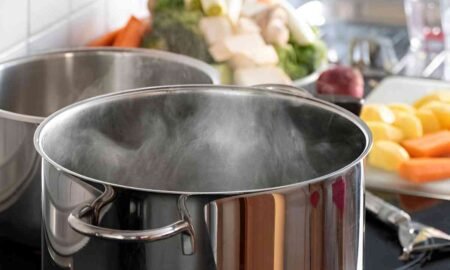Non Stick Cooking Pots
The Ultimate Guide to Non-Stick Cooking Pots
Non Stick Cooking Pots have become an inseparable part of modern kitchens, serving to lighten the burden of cooking and making it more agreeable. Because of the prevention against sticking, they are perfect for frying eggs and simmering light sauces. In this post, go deep into some benefits, types, and maintenance of non-stick cooking pots for you to select a good option in the market that will cover all your needs in the kitchen.
Non Stick Cooking Pots Price In Kenya
-
Cookware, Home & Office, Household, Kitchen & Dining, Kitchenware Items, Non Stick Sufuria, Sufuria
10 pcs Bosch Grey
Original price was: KSh11,500.KSh9,200Current price is: KSh9,200.Quick Order -
Cookware, Home & Office, Kitchen & Dining, Kitchenware Items, Non Stick Sufuria, Sufuria
10pcs Bosch Cookware Set With Silicon Cover
KSh5,000Quick OrderSelect options This product has multiple variants. The options may be chosen on the product pageQuick View -
Cookware, Household, Kitchen & Dining, Kitchenware Items, Non Stick Sufuria, Sufuria
60pcs Sarah Tech Stainless steel cookware set
Original price was: KSh20,000.KSh17,000Current price is: KSh17,000.Quick Order -
Cookware, Home & Office, Household, Kitchen & Dining, Kitchenware Items, Non Stick Sufuria, Sufuria
70 PCS Cookware Set Heavy Duty Stainless Steel Cooking Pots
Original price was: KSh17,000.KSh15,500Current price is: KSh15,500.Quick Order -
-
Cookware, Home & Office, Kitchen & Dining, Kitchenware Items, Non Stick Sufuria, Sufuria
Big Baroly Granite Cookware Set
Original price was: KSh9,000.KSh7,999Current price is: KSh7,999.Quick Order -
Cookware, Home & Office, Household, Kitchen & Dining, Kitchenware Items, Non Stick Sufuria, Sufuria
Black Bosch Cookware Set
Original price was: KSh10,500.KSh9,200Current price is: KSh9,200.Quick Order -
Cookware, Kitchenware Items, Non Stick Sufuria, Sufuria
Bosch 10pcs Granite Cookware Set
Original price was: KSh11,500.KSh10,500Current price is: KSh10,500.Quick Order -
Cookware, Kitchenware Items, Non Stick Sufuria, Sufuria
Bosch Cookware Set With Lids
Original price was: KSh12,000.KSh11,500Current price is: KSh11,500.Quick Order -
Cookware, Household, Kitchen & Dining, Kitchenware Items, Non Stick Sufuria, Sufuria
Ceramic Cookware Sets
Original price was: KSh10,000.KSh9,500Current price is: KSh9,500.Quick Order -
Cookware, Household, Kitchen & Dining, Kitchenware Items, Non Stick Sufuria, Sufuria
Dessini cookware set-23 Pieces
Original price was: KSh12,000.KSh10,500Current price is: KSh10,500.Quick Order -
Cookware, Household, Kitchen & Dining, Kitchenware Items, Non Stick Sufuria, Sufuria
Elhdad 50pcs Stainless Steel Cookware Set.
Original price was: KSh13,500.KSh12,500Current price is: KSh12,500.Quick Order -
Cookware, Kitchen & Dining, Kitchenware Items, Non Stick Sufuria, Sufuria
Heavy Granite UCC LIFE Cookware Set
Original price was: KSh16,500.KSh14,000Current price is: KSh14,000.Quick Order -
Cookware, Home & Office, Household, Kitchen & Dining, Kitchenware Items, Non Stick Sufuria, Sufuria
JP Nonstick Cookware Set
Original price was: KSh8,000.KSh7,000Current price is: KSh7,000.Quick Order -
Cookware, Kitchen & Dining, Kitchenware Items, Non Stick Sufuria, Sufuria
Marwa Cookware
Original price was: KSh13,600.KSh12,999Current price is: KSh12,999.Quick Order -
Cookware, Kitchenware Items, Non Stick Sufuria, Sufuria
Signature Die Cast Cookware Set 12pcs
Original price was: KSh15,000.KSh13,200Current price is: KSh13,200.Quick Order -
Cookware, Household, Kitchen & Dining, Kitchenware Items, Non Stick Sufuria, Sufuria
Silicone Bosch 11 Pcs Cookware Set
Original price was: KSh12,750.KSh10,499Current price is: KSh10,499.Quick Order -
Cooking Appliances, Cookware, Kitchen & Dining, Kitchenware Items, Non Stick Sufuria, Sufuria
Stainless Steel Cookware Set-HEVICHU 40pcs
Original price was: KSh15,500.KSh13,500Current price is: KSh13,500.Quick Order -
Cooking Appliances, Cookware, Kitchen & Dining, Kitchenware Items, Non Stick Sufuria, Sufuria
Tornado Cookware Set
Original price was: KSh9,999.KSh6,999Current price is: KSh6,999.Quick Order -
Cookware, Kitchen & Dining, Kitchenware Items, Non Stick Sufuria, Sufuria
Tornado Cookware Set
Original price was: KSh8,500.KSh6,600Current price is: KSh6,600.Quick Order -
Cookware, Kitchen & Dining, Kitchenware Items, Non Stick Sufuria, Sufuria
UCC LIFE Cookware Set
Original price was: KSh16,500.KSh14,000Current price is: KSh14,000.Quick Order -
Cookware, Kitchenware Items, Non Stick Sufuria, Sufuria
Unique Cookware Set 12pcs
Original price was: KSh10,000.KSh9,300Current price is: KSh9,300.Quick Order -
Cookware, Kitchenware Items, Non Stick Sufuria, Sufuria
Yimeitai Cookware Set with Kettle -12pc
Original price was: KSh9,500.KSh8,000Current price is: KSh8,000.Quick Order
What are Non Stick Cooking Pots?
Non stick cooking pots and pans are treated with a special coating applied to their surfaces that reduces the chances of food sticking during the cooking process. This makes cooking easier and quicker, reducing the amount of oil or butter needed, thereby making meal preparation healthier.
The Benefits of Non-Stick Cooking Pots
- Ease of Cooking
Non-stick pans keep you away from the hassle of sticking or burning. The non-stick coating will definitely ensure that your favourite recipes, above all with sensitive ingredients like eggs, fish, and pancakes, turn out flawlessly each time. - Healthier Cooking
One of the most important advantages of the non-stick cookware is that there is a lesser need for fats and oils. Since the food does not stick to the surface, lighter meals could also be prepared with no sacrifice in taste and texture. - Easy to Clean
Cleaning the non-stick pots is easy. Minimum scrubbing, no harsh cleaning agents involved, saves them time and efforts in the kitchen. Sometimes, with just a wipe of warm soapy water, these kinds of pots are ready to shine again. - Durability and Versatility
Modern non-stick pots are really hard-wearing, with most of them boasting great performance against scratches and wear. Most of them can support various heat sources such as gas, electric, and induction stovetops, which makes them quite versatile for any kitchen.
Types of Non-Stick Coatings
Not all non-stick coatings are created equal. The type of coating present will determine something about durability, safety, and functionality.
Teflon (PTFE)
Teflon is probably the most recognizable type of non-stick coating. It’s a solid non-stick coating made from polytetrafluoroethylene or PTFE. For general non-stick applications, it is very competent. Non-stick pans coated with Teflon are ideal for low to medium heat applications – the coatings tend to release harmful chemicals if they get too hot, over 500°F/260°C.
Ceramic Non-Stick
They are more biologically friendly and chemical-free, compared to the traditional Teflon. They also don’t contain PTFE and PFOA. Thus they are favoured by people of a health-conscious mentality. The ceramic non-stick pots perform high at temperatures but being thinner wear off sooner than Teflon-coated ones.
Hard-Anodized Aluminum
The cookware has been treated with an electrochemical process that hardens the surface of aluminum into a non-reactive and scratch-resistant one. Hard-anodized pots are indeed quite durable, offering excellent heat distribution and long-lasting non-stick performance.
Enamel-Coated Cast Iron
Non-stick enamel-coated cast iron pots are giving one the heavier duty options, alongside a more reliable cooking experience. These kinds of pots are treated with smooth non-stick enamel surfaces that help in distributing heat efficiently. They can be ideal for slow cooking and braising, though one might need to practice a little more care compared to the other non-stick options.
How to Properly Care for Non-Stick Cooking Pots
Properly taking care of your non-stick cooking pots means they will last longer and serve you without problems. Here are some of the key tips:
1. Use the Right Utensils
When cooking with a non-stick pot, it is advisable to stir your food with a wooden, silicone, or plastic spoon. Such types of utensils do not scratch the surface when compared to their metal heads, which may damage the coating and reduce the useful life of this finish.
2. Cook on Low to Medium Heat
Most of the non-stick pots are not designed to operate at high heat. They must always be used at low to medium heat to prevent overheating, which can degrade the non-stick surface and, in extreme conditions, even release fumes from certain coatings, such as Teflon.
3. Avoid Abrasive Cleaners
It is very easy to damage this non-stick coating with harsh scrubbing pads or abrasive cleaners. Cleaning the pots should be done with a soft sponge and warm soapy water. For stubborn residues, let the pot soak in water for a few minutes to loosen any food that may be stuck on.
4. Hand Wash Instead of Using a Dishwasher
While most of the non-stick pots are labelled dishwasher-safe, it is generally recommended to wash them by hand. The extreme heat and harsh detergents found in a dishwasher may reduce the life of the non-stick coating.
5. Store Them Properly
Store your non-stick pots with great caution in order not to scratch or dent them. You can put soft cloths or paper towels between the stacked pots in order to save the surface from damage.
Top Non-Stick Cooking Pot Brands
Several brands are held in high esteem in the category of non-stick cookware. A selection of the top performers includes:
1. T-fal
T-fal is one of the first to enter the market of non-stick cookware and provides good, solid, reasonably priced non-stick pots. Thermo-Spot technology helps them make sure that the pot reaches the correct temperature before heating up for cooking so it will provide consistent results.
2. Calphalon
Calphalon is the most renowned for its durable hard-anodized aluminum non-stick pots that can take high heat for even conduction. That is why it exists in almost every home and professionals who love cooking.
3. GreenPan
GreenPan will suffice the needs of environmentally cautious individuals. This brand offers non-stick pots with a covering made from ceramics. These utensils are free from PFAS, PFOA, lead, and cadmium, hence their makeup presents health means in your kitchen.
4. Le Creuset
If you’re in the market for a bit of high-end cookware, then Le Creuset’s enamel-coated cast iron pots are truly the ultimate luxury when it comes to cookware. Though on the expensive side, they retain heat well and distribute it evenly, which is excellent when working on any recipe that requires slow cooking.
When to Replace Your Non-Stick Cooking Pots
The non-stick pan will not last long. Not to mention good care, the coating may wear out with time. So here are the signs that probably will show it is the right time for a change in your pan:
- Sticking food: If the food has begun sticking on the surface even with adequate usage, the coating is surely wearing off.
- Discolouration or peeling: This would stipulate that the non-stick surface has degraded.
Changing your nonstick pots at this stage will ensure you keep enjoying the benefits of efficient and healthy cooking.






















































